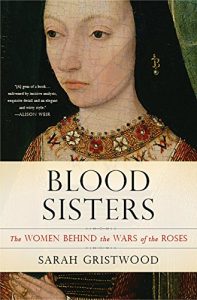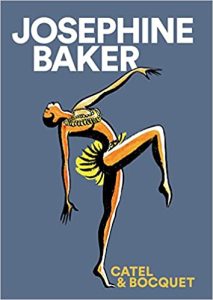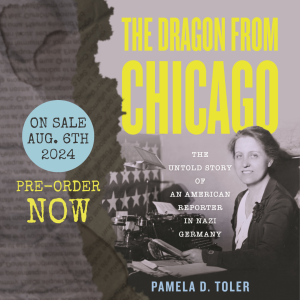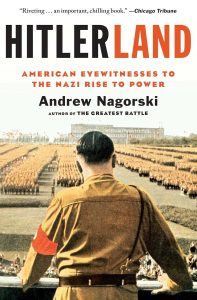From the Archives: Blood Sisters
I have started and abandoned three blog post topics this morning. Two of them were based on pieces of information that turned out to be not quite correct when I looked at them more closely. And the third was a little known moment within a well-known story: the moment was too small to support a post by itself and the well-known story was too well known to re-tell here. *Sigh*
Luckily I had reason to rummage on my bookshelves recently in response to a request for books about historical women prior to 1700. I now have a list of books that I’ve reviewed here on the Margins that I would be happy to recommend to anyone. I will fall back on them when and as needed in the coming weeks. (Thanks, Linnie.)
First up, Blood Sisters by Sarah Gristwood, which I reviewed in 2013. (The news referred to in the first sentence is no longer new, though it was the subject of a film, The Lost King, which was released in March, 2023. Apparently Richard III is able to generate endless controversy.)
With the discovery of Richard III's bones under a Leister parking lot, the Wars of the Roses are in the news again. Historians and hobbyists alike are arguing the relative claims of Lancaster and York across the media. In Blood Sisters: The Women Behind the Wars of the Roses, Sarah Gristwood tells the familiar story of the so-called "Cousins' War" from a new perspective.
As Gristwood points out, most histories of the period echo the "patriarchial assumptions" of the time and focus on its male protagonists. In Blood Sisters, kings and kingmakers take a back seat to their mothers, wives, sisters and daughters. Some, like heiress Anne Neville, were passed from one royal family to another like pieces of property. Others were actively involved in the politics of the time, using husbands and sons as their path to power. Whether pawns or players, all were caught up in the web of changing alliances, family loyalties and political machinations that defined the war. Gristwood pieces together their stories from their household accounts, their occasional letters, and their appearances in the accounts of others.
At its heart, Blood Sisters is about relationships. Gristwood describes the events surrounding the Wars of the Roses and the resultant rise of the Tudor dynasty as a family saga whose protagonists were tied together in numerous ways. By focusing on the lives of the Plantagenet women, she illustrates the complexities of those ties--creating a larger picture of the Wars of the Roses in the process.
Josephine Baker–a Graphic Biography
It took me several months to work my way through Catel Muller and José-Louis Bocquet’s graphic biography of Josephine Baker. Not because it wasn’t interesting or well done, but because it is the graphic equivalent of a Big Fat History Book, with 460 pages of densely packed graphic story and another 100 pages of supporting material, notably a useful timeline and a series of biographical essays about other characters who appear in the book, sometimes for only a single panel. The essays are arranged in the order in which they appear in the main story, beginning with Baker’s mother and ending with The Rainbow Tribe, Baker’s multi-ethnic family of twelve adopted children.
Josephine Baker is a cradle-to-grave biography of a complex personality who led a long and action-packed life. The visual language of the work is sophisticated. Physical settings are rendered in meticulous, carefully researched detail. By contrast, action scenes are starkly black and white, with the background and characters alike rendered in a abstracted, almost comic book style. Baker seems to vibrate with energy, dominating every panel she appears in. Against all odds, Catel gives the reader an almost tangible feeling for Baker as a dancer.
The biographical essays are a critical element of the book: both its strength and an illustration (hah) of the form’s limits. Once I discovered them, I read the essays in conjunction with the related chapter, but it was inherently awkward—a break in the narrative flow of the story. In interviews, Catel and Bocquet make it clear that the essays are not an afterthought. They were intended to flesh out the story in a way that was impossible to do within limits of a graphic work. At its best, graphic non-fiction uses visual elements to tell a story in a new and powerful way. In Josephine Baker, Catel and Bocquet have attempted to straddle the divide.
****
And speaking of complex personalities who lived a long and action packed life:
Hitlerland
My first step when I begin a new book is what I think of as a self-directed masters’ program. Since I am inevitably writing about something outside my academic field, I read deep and wide.* It is a wonderful part of the process—one I share with you as I wrap my head around the big picture, stumble across great stories, and read fascinating books.
For some reason, I never told you about Andrew Nagorski’s Hitlerland: American Eyewitnesses to the Nazi Rise to Power, which was one of the first books I read as background material for writing The Dragon in Chicago. Actually, now that I think about it, Hitlerland was one of the first books I read as background material for writing my book proposal. I may not have shared it because I didn’t want to spill the beans about the book idea. Luckily it is never too late for a book review.
Nagorski, himself a foreign correspondent, opens Hitlerland with a two page synopsis of Sigrid Schultz’s life and career as the head of the Chicago Tribune’s Berlin bureau. He returns to Schultz on occasion as a touchstone, but he focuses on Americans whose experience of Nazi Germany was shorter and less informed that Schultz’s. He looks at accounts by Americans who worked or traveled in Germany in the 1920s and 1930s: diplomats, journalists, entertainers, scholars, students, and Olympic athletes. Not to mention Charles Lindbergh, whose visits in Germany between 1936 and 1939 at the invitation of the Nazi government were in some ways sui generis.
The final result is a startling picture of just how much Americans actually knew about what was happening in Germany, and how little many of them understood. It was relatively easy for Americans to travel to and in Germany in the years between the two world wars, and there was plenty of reason for them to do so. Berlin was a cultural hub that rivaled Paris in the 1920s, known as the “Golden Years.” But Nagorski makes it clear that many of them lived in relative isolation, spending time with other Americans. The result was a rosy view of Germany that led tourists and political junketeers to question the reality of the news reported by Sigrid Schultz and her colleagues.
An excellent introduction to a difficult subject.
*Actually, I do this when I write a researched-based article as well, though I try not to go quite as deep or as wide. Whenever I find myself slipping over the edge, I remind myself of what I think of as the Grange incident. (My apologies if you have heard this story before.) Early in my writing career, when I was pitching history-adjacent stories everywhere I could think of, I got an assignment to write an article on the history of the Grange** for Hobby Farms magazine. Newly out of my doctoral program, I plunged into a literature search. I soon began to panic at the amount of work I needed to do. Then I realized I had accumulated a list of 25 (very academic) books and articles as background pieces for a 250 word article.
**A national farming association founding in the mid-nineteenth century, the Grange was (and is) both a national lobby for the interests of small farmers and a community-based organization for farm families. In the past, Grange Halls were often the community centers in small rural towns. In short, the Grange was a Big Deal.
****
Just a reminder, The Dragon for Chicago is now available for preorder wherever you buy your books. If you want a signed copy, you can order it through my local independent bookstore here: https://www.semcoop.com/dragon-chicago-untold-story-american-reporter-nazi-germany Use the special instructions block at the bottom on the order page to request a signed copy and tell me how you want it signed.
Thanks to those of you who have already pre-ordered from any purveyor of books. It makes a difference.



